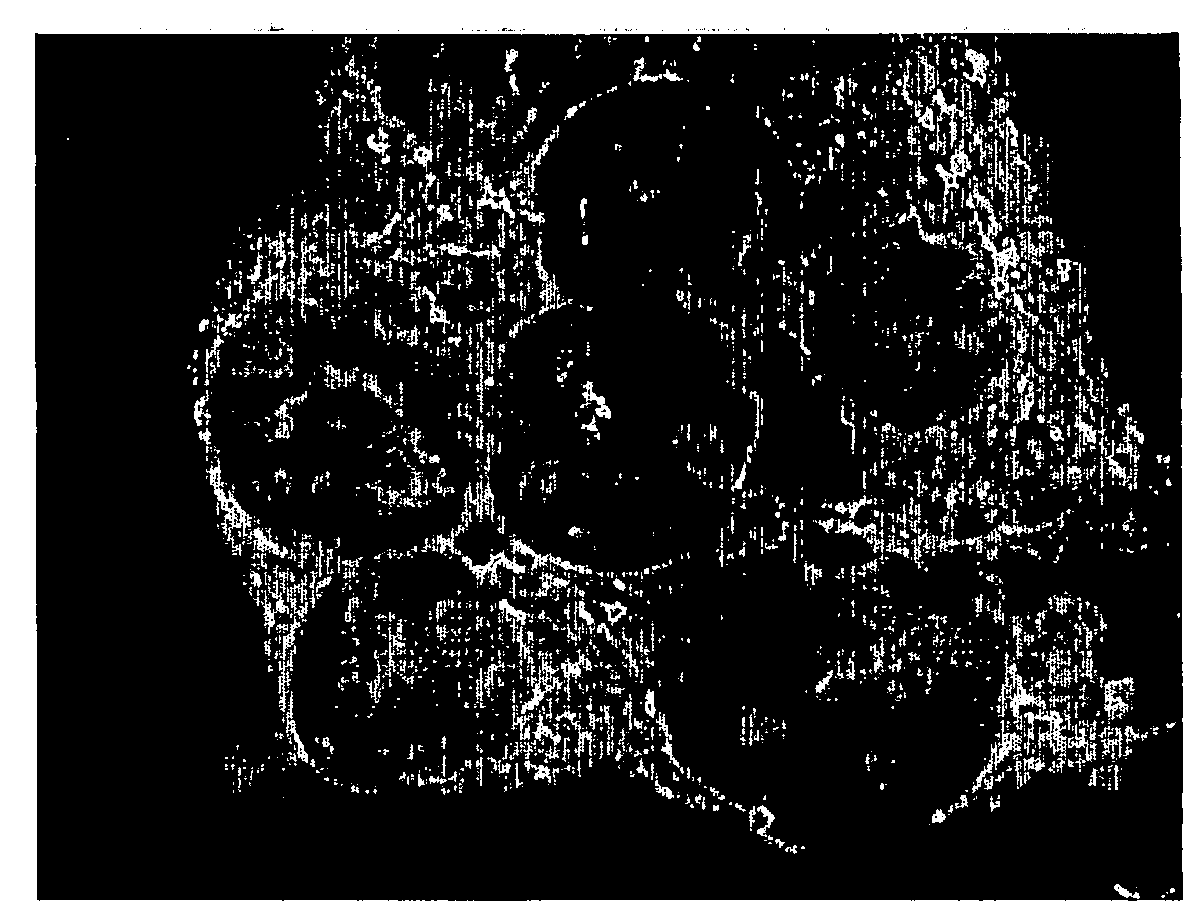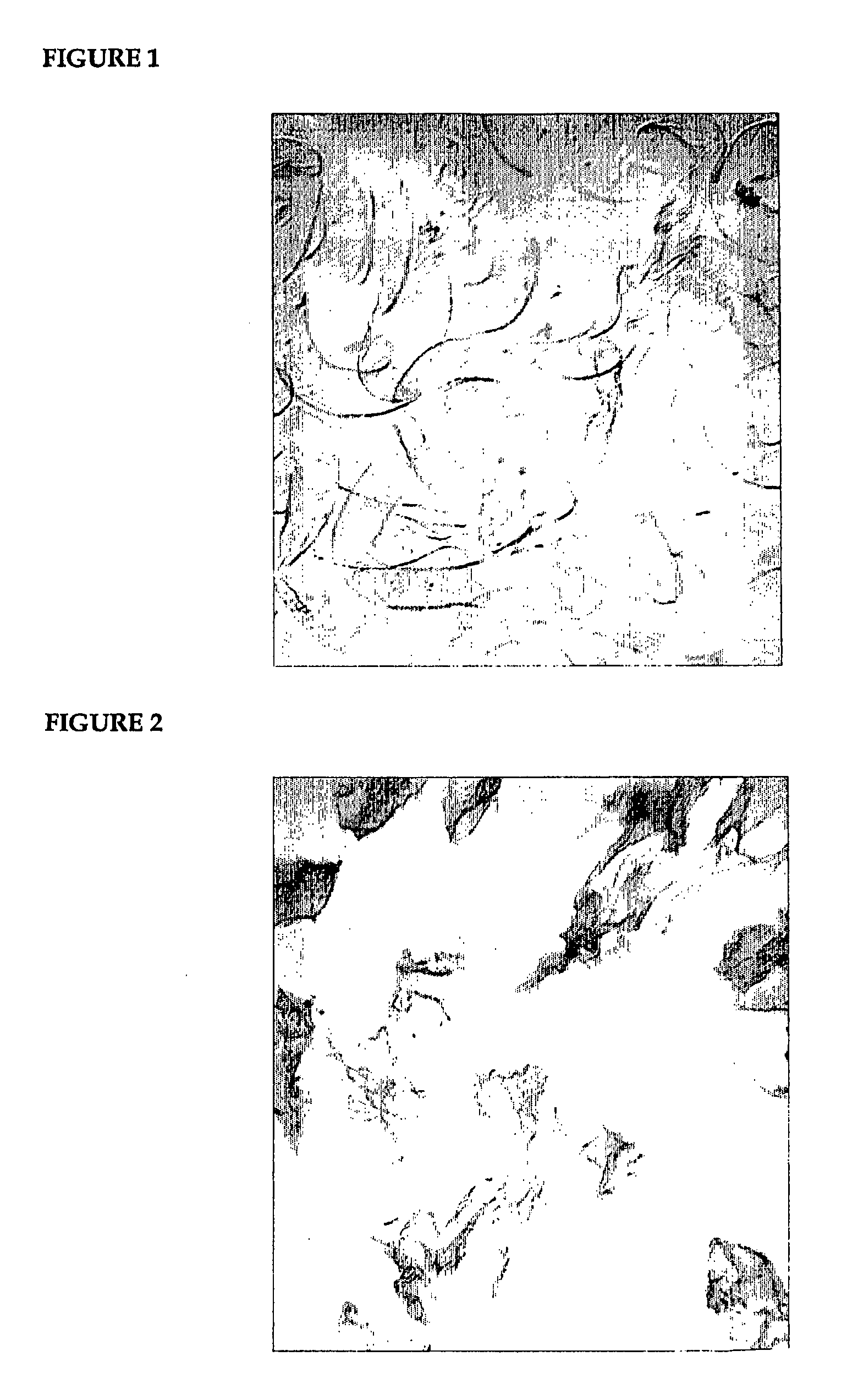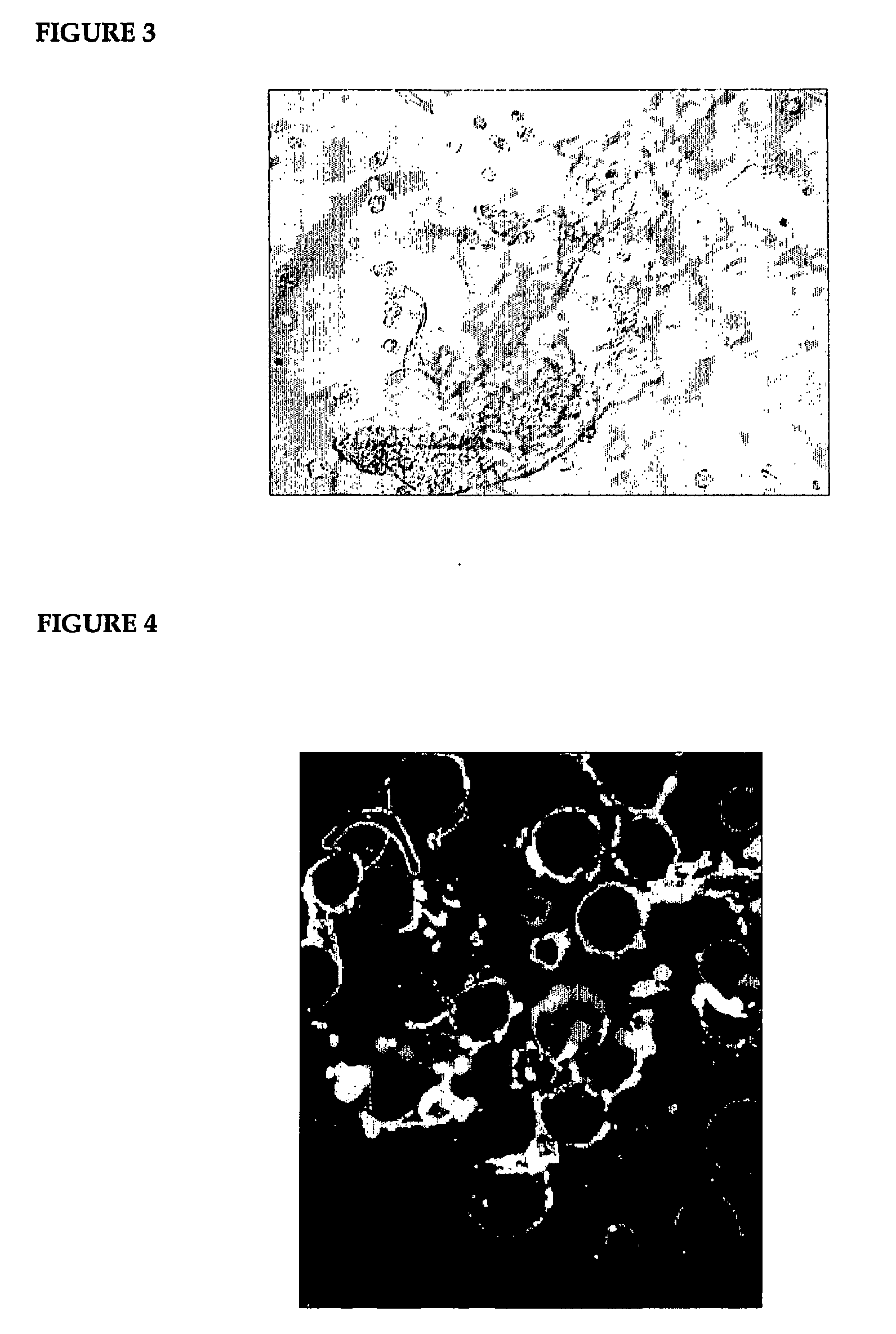Preparation and Use of Basement Membrane Particles
a technology of basement membrane and particle, which is applied in the field of in vitro cell culture, can solve the problems of unsuitability of previous basement membrane preparations
- Summary
- Abstract
- Description
- Claims
- Application Information
AI Technical Summary
Benefits of technology
Problems solved by technology
Method used
Image
Examples
example 1
Isolation of Basement Membrane from Testis
[0052]Fresh bovine testis was obtained from an abattoir. After removal of the external membranes, the tissue comprising the seminiferous tubules was sliced into approximately 5×5×5 mm pieces. Pepsin (0.5 mg / ml final concentration) was added to the sliced tissue at pH 2.5 in 100 mM acetic acid and the tissue digested for between 1 and 4 days. The digested tissue was then collected by brief centrifugation, and washed several times with phosphate buffered saline (PBS) and collected by brief centrifugation or by settling. Washed samples were examined by histology using staining with Sirius red, and by immunohistology to examine the presence of basement membrane components using antibodies to laminin and collagen type IV. See FIG. 1.
example 2
Isolation of Basement Membrane from Kidney
[0053]Fresh bovine kidney was obtained from an abattoir. After removal of the external membranes, the tissue comprising the glomerulus was sliced into approximately 5×5×5 mm pieces and treated according to the procedure given in Example 1.
example 3
Isolation of Basement Membrane from Lung
[0054]Fresh bovine lung was obtained from an abattoir. After removal of extraneous tissues including the main bronchial tubes, the tissue comprising mainly the alveolar tissue was sliced into approximately 5×5×5 mm pieces and treated for isolation of basement membrane particles according to the procedure given in Example 1.
PUM
 Login to View More
Login to View More Abstract
Description
Claims
Application Information
 Login to View More
Login to View More - R&D
- Intellectual Property
- Life Sciences
- Materials
- Tech Scout
- Unparalleled Data Quality
- Higher Quality Content
- 60% Fewer Hallucinations
Browse by: Latest US Patents, China's latest patents, Technical Efficacy Thesaurus, Application Domain, Technology Topic, Popular Technical Reports.
© 2025 PatSnap. All rights reserved.Legal|Privacy policy|Modern Slavery Act Transparency Statement|Sitemap|About US| Contact US: help@patsnap.com



